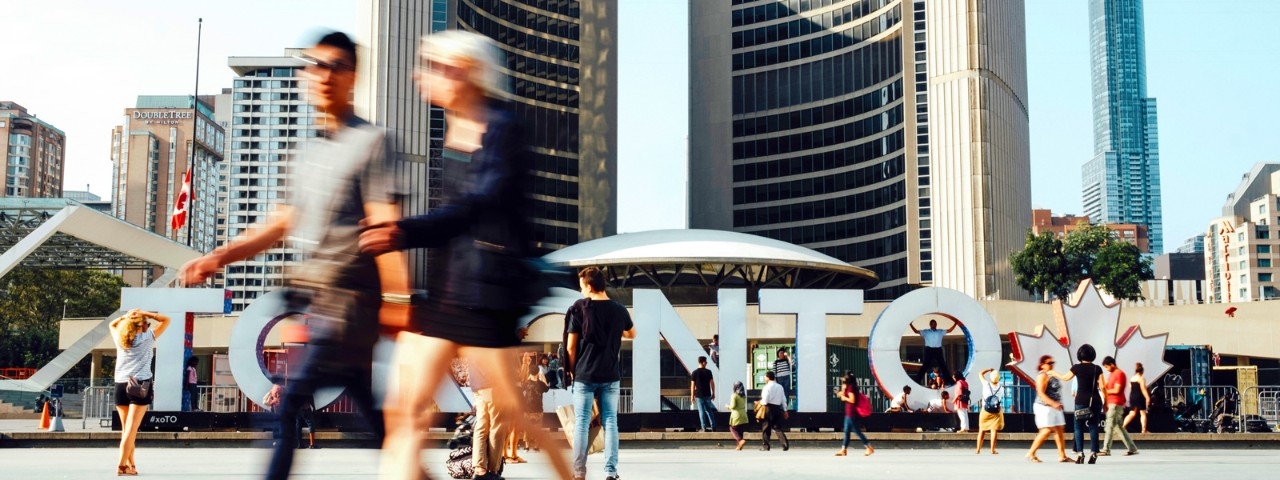“Go west, young man,” New York publisher Horace Greeley exhorted readers back in the 19th century, when land and a gold rush lured millions of Americans to the frontier. Today, Toronto’s leaders have updated that maxim for the era of artificial intelligence: go north, young programmer.
With a welcoming attitude and some carefully targeted incentives, Canada’s largest city has quietly staked a claim to high-tech leadership, particularly in AI. The city boasts more than 228,000 technology jobs, a number that ranks fourth on the continent behind the San Francisco Bay Area, New York, and Washington, according to real estate services company CBRE. And it is growing faster than its rivals, expanding its tech labor force by 54 percent between 2013 and 2018.
Toronto comes in second place among 29 large cities for the quality of its workforce, according to Oliver Wyman Forum's Global Cities’ AI Readiness Index. Network effects get part of the credit. Canada’s business, financial, and media capital acts as a natural magnet for tech talent. That’s not exactly replicable, especially for smaller cities. But good policy plays a large role, which is Toronto’s real lesson.
At a time when the US is seeking to curb immigration and build walls, Canada is opening its doors wider. The government aims to admit more than one million immigrants - nearly 3 percent of the national population - between 2019 and 2021. Roughly half of them will be economic migrants, many of them selected under a points system that gives priority to the highly skilled.
Meanwhile the province of Ontario, aims to boost the number of post-secondary graduates in STEM disciplines (science, technology, engineering and math) by a quarter, to 50,000, by 2022. It is also giving the Vector Institute, which boasts AI pioneer Geoffrey Hinton as adviser, $30 million to churn out 1,000 master’s level graduates in the field. And companies can tap research and development tax credits, startup seed funding and other incentives. It’s no surprise, then, that Toronto ranks second among large cities in the AI Readiness Index for its legal and regulatory environment.
Yet in focusing on the opportunities of AI, Toronto’s leaders have largely neglected the potential negatives. Nearly 1.1 million jobs, or 37 percent of the workforce, are at risk of being disrupted by AI, roughly on a par with the likes of New York, San Francisco, and Berlin, but the city lags many rivals in developing a strategic plan to confront that challenge and upgrade the skills of those whose jobs are threatened.
That’s a key reason why Toronto ranks only 27th overall out of 105 global cities in the AI Readiness Index. The lack of vision can have real consequences. In October 2019, the authorities dramatically scaled back the size of a planned "smart city" along the city’s lakefront, which they hoped would boost the city’s high-tech reputation, because of complaints that its array of sensors and cameras could be used for surveillance.
Toronto has work to do to prepare for AI disruption, and win over the hearts and minds of its people. But the city can draw on an impressive brain trust of technologists as well as the example of other cities around the globe.

